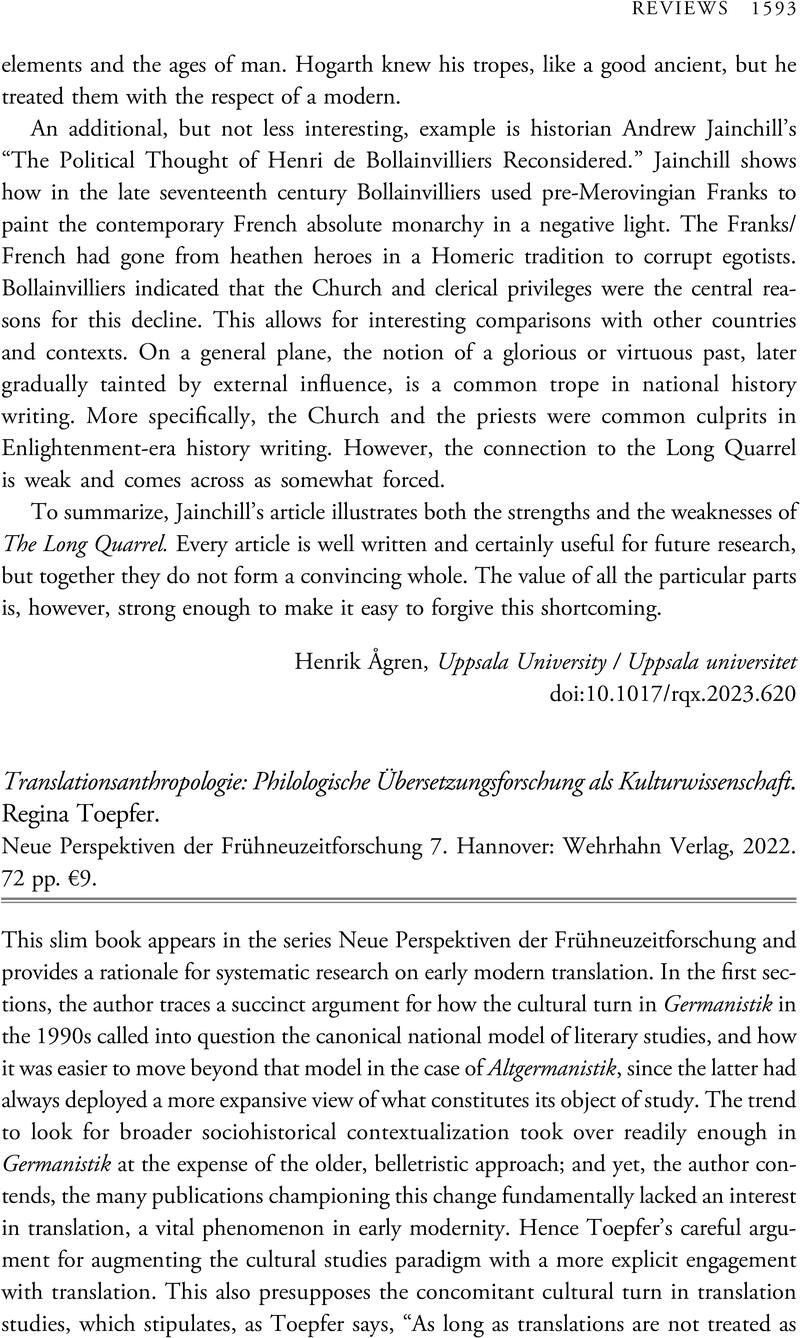No CrossRef data available.
Article contents
Translationsanthropologie: Philologische Übersetzungsforschung als Kulturwissenschaft. Regina Toepfer. Neue Perspektiven der Frühneuzeitforschung 7. Hannover: Wehrhahn Verlag, 2022. 72 pp. €9.
Review products
Translationsanthropologie: Philologische Übersetzungsforschung als Kulturwissenschaft. Regina Toepfer. Neue Perspektiven der Frühneuzeitforschung 7. Hannover: Wehrhahn Verlag, 2022. 72 pp. €9.
Published online by Cambridge University Press: 24 January 2024
Abstract
An abstract is not available for this content so a preview has been provided. Please use the Get access link above for information on how to access this content.

- Type
- Review
- Information
- Copyright
- Copyright © The Author(s), 2024. Published by Cambridge University Press on behalf of the Renaissance Society of America



